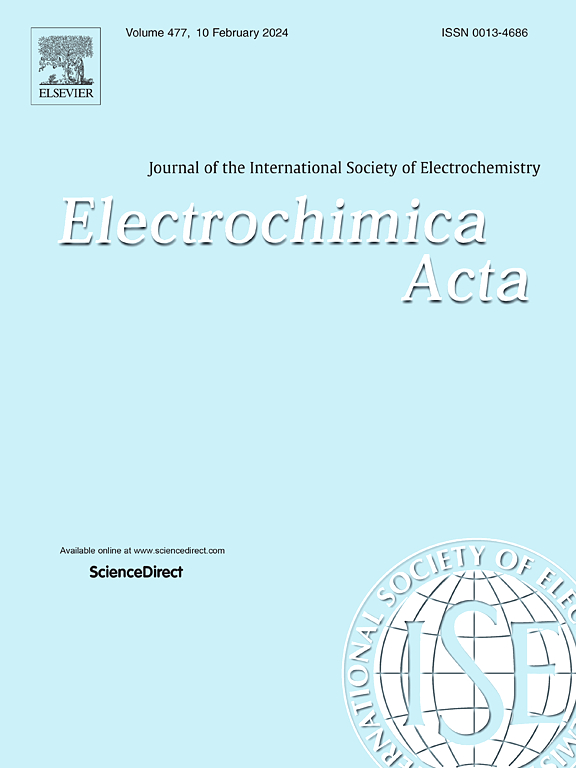碳酸氟乙烯在硅阳极上生成固体电解质界面在日历寿命老化过程中的动力学
IF 5.6
3区 材料科学
Q1 ELECTROCHEMISTRY
引用次数: 0
摘要
富硅阳极在锂离子电池(lib)中的广泛应用受到不稳定的固体电解质界面(SEI)导致电池寿命不足的阻碍。在电解液中添加氟碳酸乙烯(FEC)可显著提高循环寿命。然而,日历寿命的收益仍不清楚;静止时SEI结构仍在经历有害的改变。因此,阐明日历老化期间的SEI动态对于减轻随时间变化的容量退化至关重要。本文采用ATR-FTIR、XPS和ToF-SIMS对历法老化前后的SEI结构进行了研究。无FEC循环的Si在老化前后没有明显的SEI化学变化,钝化不良是主要的失效途径。相反,FEC- sei在老化前开始为FEC/EC电还原的短寡聚物;历法老化后,聚合碳酸盐变得更加突出。出乎意料的是,自聚合FEC的沉积是由于暴露于稀硅的时间导致的,而不是锂化表面。这一意想不到的发现得到了最近另一项Si日历老化研究的支持,该研究虽然没有调查FEC,但发现SEI在衰减时的整体失效导致的反应表面比锂化的多出约247倍。本文章由计算机程序翻译,如有差异,请以英文原文为准。
On the dynamics of the fluoroethylene carbonate generated solid electrolyte interphase on silicon anodes during calendar life aging
The widespread use of silicon (Si)-rich anodes in lithium-ion batteries (LIBs) is impeded by an unstable solid electrolyte interphase (SEI) incurring insufficient cell life. Fluoroethylene carbonate (FEC) additive in the electrolyte significantly improves cycle life. However, the gains on calendar life remain unclear; the SEI structure still undergoes detrimental alterations at rest. Thus, elucidating the SEI dynamics during calendar aging is critical to mitigating time-dependent capacity degradation. ATR-FTIR, XPS, and ToF-SIMS are used herein to investigate the SEI structure before and after calendar aging. Si cycled without FEC exhibits no notable SEI chemistry changes Pre- and Post-aging, leaving poor passivation as the main failure pathway. Conversely, the FEC-SEI starts as short oligomeric species from FEC/EC electroreduction prior to aging; after calendar aging, polymerized carbonates become consistently more prominent. Unexpectedly, the deposition of self-polymerized FEC species results from time exposure to the delithiated Si specifically as opposed to the lithiated surface. This unexpected finding is supported by another recent Si calendar-aging research, which albeit not investigating FEC, finds global failure of the SEI upon delithiation resulting in ∼247 fold more reactive surface compared to the lithiated.
求助全文
通过发布文献求助,成功后即可免费获取论文全文。
去求助
来源期刊

Electrochimica Acta
工程技术-电化学
CiteScore
11.30
自引率
6.10%
发文量
1634
审稿时长
41 days
期刊介绍:
Electrochimica Acta is an international journal. It is intended for the publication of both original work and reviews in the field of electrochemistry. Electrochemistry should be interpreted to mean any of the research fields covered by the Divisions of the International Society of Electrochemistry listed below, as well as emerging scientific domains covered by ISE New Topics Committee.
 求助内容:
求助内容: 应助结果提醒方式:
应助结果提醒方式:


